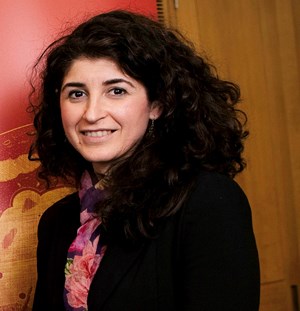Background
Diffuse midline gliomas (DMG) H3K27M-mutant, including diffuse intrinsic pontine glioma (DIPG), are pediatric brain tumors associated with grim prognosis. Although GD2-CAR T-cells demonstrated significant anti-tumor activity against DMG H3K27M-mutant in vivo, a multimodal approach may be needed to more effectively treat patients. We investigated GD2 expression in DMG/DIPG and other pediatric high-grade gliomas (pHGG) and sought to identify chemical compounds that would enhance GD2-CAR T-cell anti-tumor efficacy.
Study Abstract
Techniques for analysis of tissues, such as immunofluorescence, immunohistochemistry and flow cytometry-based approaches for analysis of cell suspensions, have allowed the characterization of single cells within heterogeneous cell populations. However, the limitations in the number of parameters that can be simultaneously assessed have hampered advances in understanding complex tissue systems. The advent of single-cell mass cytometry, cytometry by time of flight (CyTOF), which uses metal-tagged antibodies, has made it possible to overcome these constraints as CyTOF allows the detection of a large number of cell markers in parallel. A more recently developed technique, imaging mass cytometry (IMC), has pushed the boundaries even further. By combining the transformational power of mass spectrometry with tissue-based approaches, the IMC allows for high-dimensional analysis of tissues with spatial resolution. However, different challenges must be faced to fully exploit the capabilities of IMC. Here, we provide an overview of IMC, covering the basic principles of the technology, the types of tissues used, marker selection, and antibody panel design. This technical discussion is followed by specific examples of applications of IMC to breast cancer tissues, paediatric brain tumours, and paraneoplastic cerebellar degeneration with a focus on our own research. Computational tools used to analyze the resulting multi-parametric data are also addressed.
Methods
Immunohistochemistry in tumor tissue samples and immunofluorescence in primary patient-derived cell lines were performed to study GD2 expression. We developed a high-throughput cell-based assay to screen 42 kinase inhibitors in combination with GD2-CAR T-cells. Cell viability, western blots, flow-cytometry, real time PCR experiments, DIPG 3D culture models, and orthotopic xenograft model were applied to investigate the effect of selected compounds on DIPG cell death and CAR T-cell function.
Results
GD2 was heterogeneously, but widely, expressed in the tissue tested, while its expression was homo-geneous and restricted to DMG/DIPG H3K27M-mutant cell lines. We identified dual IGF1R/IR antagonists, BMS-754807 and linsitinib, able to inhibit tumor cell viability at concentrations that do not affect CAR T-cells. Linsitinib, but not BMS-754807, decreases activation/exhaustion of GD2-CAR T-cells and increases their central memory profile. The enhanced anti-tumor activity of linsitinib/GD2-CAR T-cell combination was confirmed in DIPG models in vitro, ex vivo, and in vivo.
Conclusion
Our study supports the development of IGF1R/IR inhibitors to be used in combination with GD2-CAR T-cells for treating patients affected by DMG/DIPG and, potentially, by pHGG.


